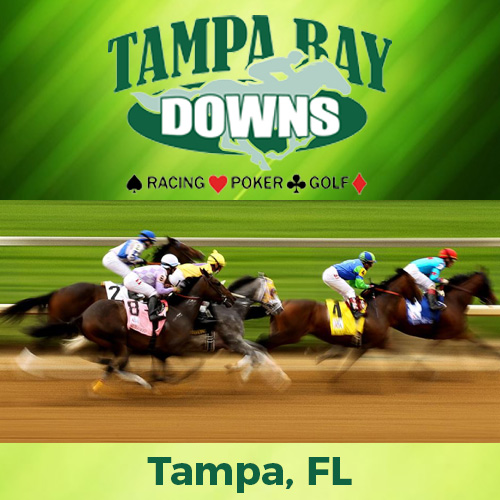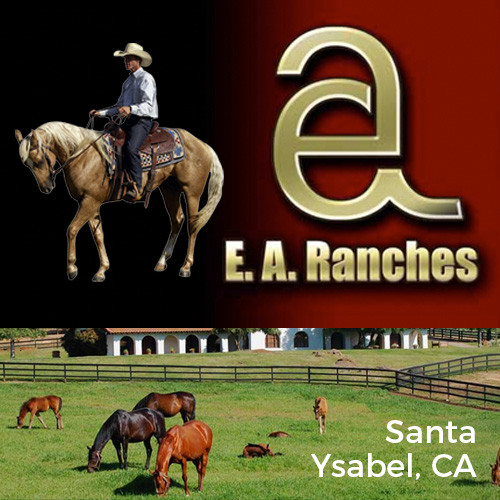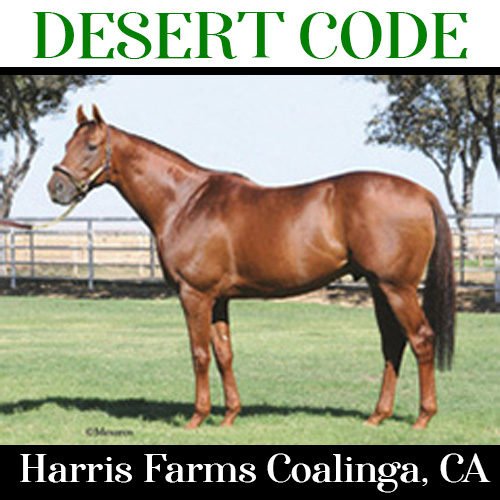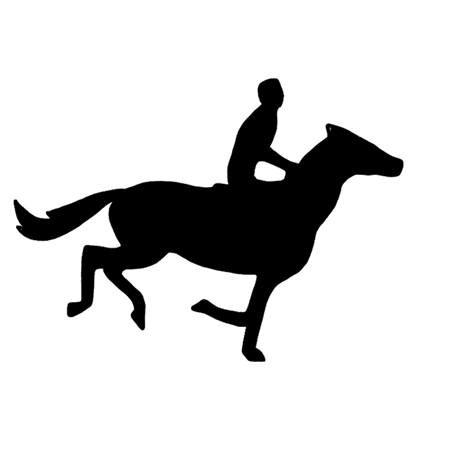The Interviews: Jeff Seder of EQB: Bloodstock for the 21st Century
Jeff Seder has been a pioneer in the field of equine biomechanics and the study of the physical attributes that makeup an exceptional racehorse. After developing a fascination with horses in his twenties, Jeff went on to create EQB and has since advised successful clients like Ken Ramsay, Bob Baffert and Ahmed Zayat on their purchases. He talks to Thoroughbred People.
TBP: How did you become interested in horses?
JS: When I was 26 I went on a date and took a ride on a rented horse. I had a great time, so I started getting serious about it and I decided I wanted to get involved with something that had to do with horses. I was too big to be a jockey and I didn't have any connections at all. I said to myself, I have business knowledge, knowledge of the sciences - I was pre-med at Harvard and in the top 1% of my class. I thought I could bring statistics and science to horse racing.
I was in law school and had to do a thesis. My thesis advisor was Archibald Cox, who you may remember from the midnight massacre and the Nixon Watergate scandal. I had to go to see him about a thesis topic. He asked me what I was interested in. I looked down at the floor and said "Horses"…. I thought he was going to kill me... Instead he turned around, grabbed a book from behind him and dropped it on the desk. Dust flew off it. He said, "This is the Statute of Massachusetts that governs horse racing. It's a perfect combination of business and law. I don't think anybody here has ever looked at it, why don't you do that?" So that’s what I did for my thesis and I learned a lot.
Then in 1976, the East Germans burst onto the scene in the Olympics. That little country won more medals than anyone else. It used to be just between Russia and the United States, now these guys come along. The US wanted to do something about it and have a response to it. There was a change in the tax code which meant you could claim tax deductions for doing research to help Olympic athletes in sports medicine. It didn’t last long, but I grabbed the opportunity while I could and got a foundation established.
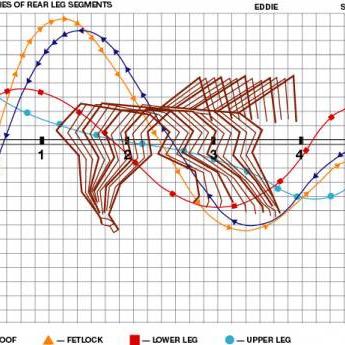 I started working with the coaches of the USA figure skating team and the luge and bobsled teams. I rounded up biomechanics experts and ended up doing half of the Olympics Committee's biomechanics work on sports medicine. We took high speed cameras and analyzed what people who were winning were doing differently, and what we were not doing. I learned to benchmark the champions. We worked for the luge team for one season. They had never previously been in medal contention. After we worked with them, suddenly they were in medal contention.
I started working with the coaches of the USA figure skating team and the luge and bobsled teams. I rounded up biomechanics experts and ended up doing half of the Olympics Committee's biomechanics work on sports medicine. We took high speed cameras and analyzed what people who were winning were doing differently, and what we were not doing. I learned to benchmark the champions. We worked for the luge team for one season. They had never previously been in medal contention. After we worked with them, suddenly they were in medal contention.
I decided I wanted to do the same kind of thing with horses, but if I had known then how long it would take and how much it would cost, I would not have started.
TBP: Was anyone else doing any similar research at the time?
JS: No, data like this on racehorses just didn’t exist then. There are plenty of people out there doing similar things now, but they don't have our databases and they don't have our years of experience. There are a lot of cheap imitators.
TBP: So how did you go about embarking on the study of biomechanics in horses?
JS: I built the first portable ultrasound machine and the first heart rate monitor for horses that you could take into a stall that worked well. I had it custom shipped from Hitachi. This was before personal computers of course. I used defense department contractor parts for it and wrote in machine language right down to the actual pluses, minuses and zeros to get the thing to work.
I started building up data from looking at horses hearts and spleens. Some of the leading veterinarians in the world who told me what I should expect, were not even close. They would show me a jar with a horse's heart in it and tell me it wouldn't go as fast as a human's heart, because of how big it was. Then we discovered that racehorses' hearts were going 200+ beats a minute or faster coming down the stretch. The horse's heart can go faster than the human heart and it can change gears immediately. A horse's heart can be going at 26 beats a minute at rest in a stall. If you go to the stall and snap your fingers, you won’t see that the horse has moved a hair, but the heart rate will have jumped to 120. It can change gears that fast and go that fast.
There were other big differences in what was different about horses from humans. The way they react to drugs is different. Morphine is a depressant in humans, but it's a wild stimulant to horses. The spleen doesn't do the same thing in a horse that it does in a human. In the horse, over evolution it became able to do the same thing as the blood doping that was outlawed in the Olympics, when Russian athletes were giving themselves transfusions of red blood cells. Horses do that naturally, evolution gave it to them, but we don't do that ourselves as humans, so we weren't aware that it was something that was going on in horses.
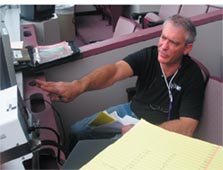 We also didn't know that horses were cooling themselves by panting. They pant as well as sweat. When we were studying their lungs doing blood gas analysis we had to build a mask and put the horse in a pool, have computers analyze everything and have the device try to catch all the air they could. The device is called a spirometer, it looks like a huge water heater and it’s supposed to catch all of the air. It didn’t, it caught about one second's worth of air. We started using multiple spirometers and that didn't work. Then we used a weather balloon, and that didn't work. We looked at each other and asked ourselves what is wrong with this picture, where is all the air from the lungs going, why are these horses moving so much air? The answer was they were cooling themselves with it.
We also didn't know that horses were cooling themselves by panting. They pant as well as sweat. When we were studying their lungs doing blood gas analysis we had to build a mask and put the horse in a pool, have computers analyze everything and have the device try to catch all the air they could. The device is called a spirometer, it looks like a huge water heater and it’s supposed to catch all of the air. It didn’t, it caught about one second's worth of air. We started using multiple spirometers and that didn't work. Then we used a weather balloon, and that didn't work. We looked at each other and asked ourselves what is wrong with this picture, where is all the air from the lungs going, why are these horses moving so much air? The answer was they were cooling themselves with it.
In the beginning not only did we not have the equipment to get the data, we didn’t know what we were looking for. I had to film horses in slow motion and digitize everything. I hired professors from MIT in engineering and statistics from Rutgers, doctors from Harvard and veterinarians from the Lubow Center. There were people giving me their theories, "Here is why Secretariat was a great horse." They were good theories, but they were wrong. No one had any real data on what made great racehorses. I spent years and years building that database.
TBP: Had any similar research been done on other animals?
JS: Any biomechanics literature and studies that was out there mostly came from the Fatigue Labs at Harvard. They put anything from iguanas to alligators, to gazelles to elephants, on treadmills and they developed equations to describe the four-legged animal's ways of moving and their energy use. After that, they could then take a fossil footprint of a dinosaur and figure out stuff like how tall the dinosaur was, how much they weighed and how fast they could go. Some of this was then being used to consult and advise people on racehorses' strides.
I gathered and digitalized data on thousands of racehorses. I followed every split of every race these horses ran through the end of their three year old year. I actually published it, but it was hard to get it published and accepted because I wasn’t a vet. They thought I was just a greedy guy trying to make money, but the only way I could legitimize what I was trying to do was to get my findings published. They were still sure I didn't know what I was talking about, even though I had so many consultants who were luminaries in their field.
We spent a long time, we spent a lot of money, we built mountains of data and we learned a lot. I discovered that while the biomechanics studies that had been done on wild animals were useful to distinguish between a gazelle and an elephant, they were worthless to be used for horses and to distinguish between a claiming horse of moderate ability and a top class stakes horse. We learned that the really good racehorses are fundamentally, physically very different from the average racehorse, even when they are a yearling.
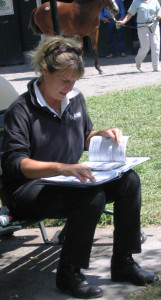 TBP: How did you start marketing this and making it a commercial venture?
TBP: How did you start marketing this and making it a commercial venture?
JS: I am a terrible marketer and also I had no horse people working with me from inside racing who could help me out. Then I hired Patti Miller who had been one of the first women jockeys in the United States. She was very smart and just as crazy as I was and she was a traditional horse person. She was fascinated by what I was up to, but when we'd get together, she'd look at some aspects of what I was doing, say "that's ridiculous" and tell me why.
We started to marry the practical with the theory and the data and we found out stuff that no one else believed was true, not even the doctors and the vets. But it was true.
TBP: So how did you start and get to use your studies and tests in practice?
JS: I had a neighbor, George Strawbridge. I got to know him because Pattie Miller went foxhunting with him two or three times a week. He gave us the chance to find him a few new racehorses at a two year old sale, using our technology. The first year we did it for him we got him Forever Together who won an Eclipse award for champion sprinter. Then the next year we bought him Informed Decision as a two year old in training. Informed Decision breezed an 11.1, so she wasn't an obvious horse in the sale to everybody, but my my tests she was pretty near perfect. She became a sprint champion and won five Grade 1s. So I had those notches on my belt.
Then around 2007 a guy called me up who was just getting a name in this industry, Ahmed Zayat. He said he would give me a chance to go to the yearling and two year old sales with him. That was a big turning point. We bought and developed five stallions and had two horses that ran second in the Derby. Then American Pharaoh came out of it, as we had bought American Pharoah’s dam, Princess Emma using my methods and testing.
Then there was Ken Ramsey. He doesn't buy multi-million dollar horses, so people look at Ken, a top owner and breeder for ten years, and wonder how does he do it?
First of all, he works hard. Second, he is a genius in pedigree. Third, there's us. He's been buying mares that have had all of the physical attributes in the elite top 2% range that we had spotted previously, but who didn't achieve their full potential on the racetrack through injury or what not, but who still had a huge heart and excellent mechanics and scored high in all of the stuff we measure. You have seen what Ken has done. He's killing them with his home breds.
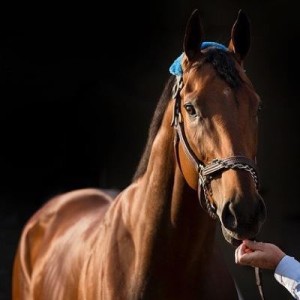 TBP: Tell us about American Pharoah
TBP: Tell us about American Pharoah
Well he wasn't a horse that a traditional horseman would miss. He was drop dead gorgeous, you didn’t have to be a genius to see he was a good looking horse, but in addition to that, what we knew about was all the hidden stuff that we test for that he scored off the chart in. He went to the sale at a time when Zayat was looking to sell some assets but he got a cut on his ankle, it had become infected and become a little swollen. We said you are not going to get your price on this horse because everyone is scared of that ankle and that swelling. Ahmed ended up buying him back at $300,000.
TBP: When do you get the chance to first analyze a horse?
JS: We analyze horses at the farms as they are growing up as babies and before they are broken. Then we go to the auctions before they sell to inspect them again.
TBP: Tell us how the process works, beginning to end.
JS: First, we do all of the traditional stuff. We have Pattie Miller go and look at the horse. Second, we start doing testing on the horse, looking at their internal organs, shapes and types and their cardiovascular system. Third, if we get there because the horse is looking good, we look at slow motion films of the horse training.
There are a lot of things a lot of horses do that make them much more prone to injury, which many really good horses just do not do. You cannot see these things with the naked eye because the action and movement is too fast. Regular video will not provide the details on the subtle things going on and on the pressure points in the legs etc., because it is 34 pictures a second and does not allow you to see as clearly as you need to. We can see these things because we film at 500 pictures a second in high definition. We look for things that predispose a horse to injury but we also look at the things that tell you how fast the horse is. We need to know how easy as well as how safe racing velocities are for the horse. These are two different areas and we have two completely different analyses types for them.
For the organs we use the ultrasound. Originally, we had to order different transducers specifically for us so we could get the right depth and the right resolution. We ended up taking what was the traditionally accepted veterinary exam of a heart and throwing it out. We changed the equipment and the way it was done and we changed what people looked at and where they looked.
You also need enough horses and data to compare one horse to another horse within 30 days of it's chronological age and close to it's weight, height, and sex. You can't compare an 800 pound 14 month old filly with a 1000 pound 17 month old colt, it doesn’t work.
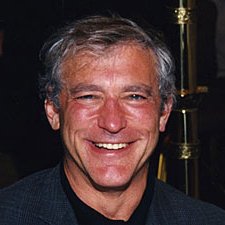 TBP: When you go to a sale do you have enough access to the horses to do successful ultrasound testing?
TBP: When you go to a sale do you have enough access to the horses to do successful ultrasound testing?
JS: We do now because we are spending millions of dollars at the sales. It's not invasive. At the sales we spend the time and the money and research everything in depth. We look at every horse.
We don't even look at the catalog until after we look at the horse. Pedigree is the science of probability that dictates what you will get before the horse is even born. Once the horse is born, you have what you have. Even if something is a low probability event, that doesn't mean it won't happen. Rare things happen. It's our job to catch these things when they do.
TBP: Do you score or grade horses using scales or percentages?
Yes. We run through a variety of many tests. If horse gets an A+ in five of them and a B in just one of them, we will take him off the list. We’re looking for the hole in a horse rather than what’s great. Very few horses pass all of our tests. Usually only about 2% of the horses in an auction will pass. My job is to find that 2%. If there are 300 horses, I would probably have a final list of six horses.
TBP: Who can access the results?
I keep all the results secret. Everyone contributes but the individual team members don’t know, only I know the results. They are only available to a few clients at each sale. They know who they are and they know who the other clients are and we come to an agreement over who gets what. I tell them that they are going to have preferences but if I have a list of six horses, it doesn't matter which one they get because statistically they are going to have equal probabilities of being good horses. One or two are going to be really great and I don't know which one or two they are, but the odds are the same for all of them so people shouldn't care which they get, although they often do of course.
I think if people check EQB's track record, and actually check not just every good horse but every horse that we’ve bought, they would see that our percentages are really unusual. Regarding the statistics, there is a lot of information but not all of it is reliable. Some statistics and factors are much more powerfully predictive than others. I think a big mistake that people make is that they grab any new thing that comes along, or they fall in love with one or two variables, which may be real but they might not be as statistically predictive as some of the other factors. I think that is the heart of the matter of how you pick a horse.
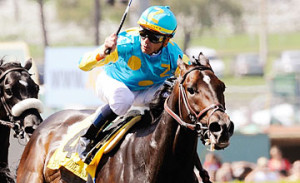 TBP: I assume American Pharoah would be top 2%?
TBP: I assume American Pharoah would be top 2%?
Oh heck American Pharoah was top 0.5%. Everybody knew he was a good horse. He's beautiful. What I had to add there, was the information about his heart, spleen, and lungs and some other biomechanical stuff. But yes, he's as good as it gets. If you draw a bell-curve over all of the variables, he's way off the edge of it. He's a rare physical specimen.
TBP: Why did Ahmed Zayat even put American Pharoah through the sales ring?
He made all his money in Egypt. Then the Arab Spring came and for a while there, I think they tied up a lot of his money. He's alright now, but for a few years there it was touch and go as to whether they would take all his money or not. He had a couple of rough years. I think he thought he was going to get a million dollars for American Pharoah and he might have done that until the cut and the inflammation on the ankle, then the prospect of the million dollars went out the window. Everyone was telling him to take the horse home, including us.
TBP: What is your opinion of synthetic tracks?
35 years ago, a Doctor from MIT and I went out and tested racetracks. He developed a small computer that would tell you what the spring constant was of the track. We tested a lot of racetracks. What we found out was that racetracks were very inconsistent. They had potholes, ruts, hard and soft spots, they had places where the drainage was different, there were many bad inconsistencies.
So why would the solution be a different surface? What about making the base better? In my opinion it was the bases that were the problem. Then they went and changed the surfaces.
In California at Santa Anita, it was my understanding that the drainage required was going to cost too much and they didn't want to do it. So they didn’t do it correctly and of course it didn't drain right. Then they punched holes in the asphalt under the cushion to try and fix it. Around those holes, the asphalt crumbled and then you had both draining issues and asphalt in the cushion. Some of the asphalt worked its way up into the synthetic track surface.
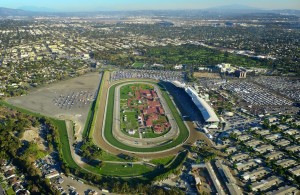 They sent a guy out from the University of Maine with his ground penetrating radar and he found all of this. The report was supposed to be confidential but then it leaked out and people wouldn't ride there. Then they threw out the track.
They sent a guy out from the University of Maine with his ground penetrating radar and he found all of this. The report was supposed to be confidential but then it leaked out and people wouldn't ride there. Then they threw out the track.
Now is that the synthetic track's fault? Or a series of blunders in the execution of it? It wasn’t fair. Most of the synthetic tracks, as long as they had a good base, had better safety statistics, unless they screwed around with the maintenance or something.
TBP: You were looking at acquiring Laurel Park in Maryland a few years back. What happened?
I raised the money to go do it. I got to the day of the auction and the court canceled the auction on the day because they said that no one there had enough money. I was pretty sure we were going to get it. How they could decide that there was not going to be anyone there, when there were obviously enough qualified bidders, I don't know. They didn't know who I was, but they knew who the others were who were there.
I had spent almost a year and hundreds of thousands of dollars in due diligence. I had studied racetracks for years. I really thought we were ready. We just didn't get the opportunity to do it. Since then there hasn’t been another track like that available. When there is one, we’ll go after it.
TBP: Do you feel that it is dangerous to have Casino’s linking to and supporting racetracks?
Absolutely. Fifty years ago, racetracks were the only place you could gamble. Now the gaming industry has become immense and racing is just a small piece of it. The racing is also the most expensive and complex piece of it. It is cheaper and easier to make money for an operator from a slot machine. So why would they want to continue with the racing then? The only reason they’re continuing racing is because they have to, to keep their license. So if that requirement disappeared, so might the racing.
Having said that, a niche business can be terrific. Racing could become the high-end, sophisticated niche within gaming. A racetrack can also make money by itself without a casino - if it’s done right. However it's not going to do that as long as the people who are running it have no expertise in that niche and consider it to be an albatross. And that’s where we are at with that.
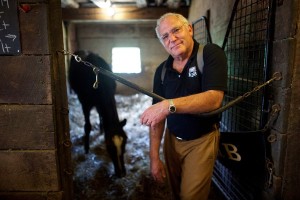 TBP: Another problem is that there is no incentive or advantage offered from a betting perspective to go to the track.
TBP: Another problem is that there is no incentive or advantage offered from a betting perspective to go to the track.
JS: No there isn't, in fact it’s the other way around now. People placing bets off track are getting the rebates. So it actually ends up being cheaper for them to bet online away from the track. But look, people can still do that in other countries, they can bet online off track as well, but they go to the races because it’s fun. It's not enough fun here.
TBP: Where are you on Lasix and the drug debate?
JS: I wouldn’t want to go to zero in training because I do not think that is good for the horse. Some of the horses legitimately train better with a little aspirin or a little this or that. It can be safer and more comfortable for them. Testing has gotten pretty good. The problem isn’t with the testing or rules, it's with the enforcement of them. It’s so haphazard. When trainers get banned, their assistant just takes the license over temporarily. Enforcement is the problem and it has always been a farce.
You will fail to curb drug use if you don’t do any police or enforcement work. You go to some of these minor racetracks and everyone knows who’s cheating. The trainer doesn’t get caught because between him and his vet he can get around the testing. Even if he does get caught, it doesn't matter because the enforcement is so bad.
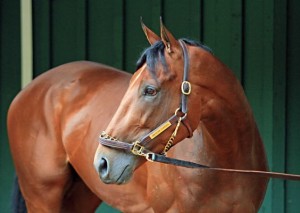 TBP: Do you think we know less about horses now than we did a century ago?
TBP: Do you think we know less about horses now than we did a century ago?
Well one of the interesting things I think we have learned is that the horses this new technology horses is picking, look like the pictures of the great horses that we see in the books from 100, 150 years ago. It may well be that what has happened since then, when most people had horses and they were part of their everyday lives, is that a lot of the common knowledge base has just been lost. Some of what we are doing now is rediscovering it. I think we are bringing it back home. The technology is discovering the things that they knew back then. I think people underestimate the body of knowledge that was out there when horses were everywhere and virtually everyone had them.
TBP: How good is American Pharoah?
I think he’s good as there has ever been, even though he lost the Travers. Secretariat was beaten several times. As you know, the race is not always to the swift nor the battle to the strong.
Learn more about Jeff's company EQB at EQB.com
KBC Horse Supplies
https://www.kbchorsesupplies.com/

